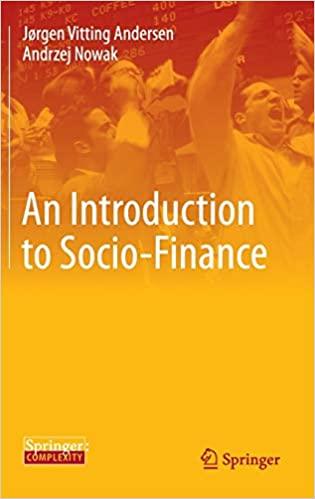Question
4. Suppose we have two risky assets, Stock I and Stock J, and a risk-free asset. Stock I has an expected return of 25% and
4. Suppose we have two risky assets, Stock I and Stock J, and a risk-free asset. Stock I has an expected return of 25% and a beta of 1.5. Stock J has an expected return of 20% and a beta of 0.8. The risk-free assets return is 5%. (13 marks)
a. Calculate the expected returns and betas on portfolios with x% invested in Stock I and the rest invested in the risk-free asset, where x% = 0%, 50%, 100%, and 150%. (2 marks)
b. Using the four portfolio betas calculated in part (a), reverse engineer (i.e., derive mathematically) the portfolio weights for a portfolio consisting of only Stock J and the risk-free asset. (4 marks)
Hint: For example, if we wished to obtain a portfolio beta of 0.5, then the weights on Stock J and the risk-free asset must be 62.5% and 37.5%, respectively, and the expected return for this portfolio must be 14.375%.
- Calculate the reward-to-risk ratios for Stock I and Stock J. (2 marks)
- Plot the portfolio betas against the portfolio expected returns for Stock I on a graph, and link all the points together with a line. Then plot the portfolio betas against the portfolio expected returns for Stock J on the same graph and link all these points together with another line. Ensure that the x-axis and y-axis are clearly labelled. (Hint: This can be done easily with the charting function in Microsoft Excel.) (3 marks)
- Using the graph in part (d) above, together with your answers in part (c) above, elaborate on the efficiency of the market containing Stock I and Stock J. (2 marks)
Step by Step Solution
There are 3 Steps involved in it
Step: 1

Get Instant Access to Expert-Tailored Solutions
See step-by-step solutions with expert insights and AI powered tools for academic success
Step: 2

Step: 3

Ace Your Homework with AI
Get the answers you need in no time with our AI-driven, step-by-step assistance
Get Started


